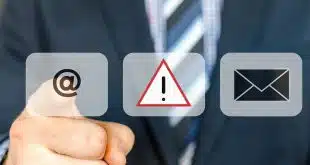Remote deposit capture still has plenty of territory to conquer in its original business-user market, but bank processor Fiserv Inc.'s CheckFree electronic bill-pay unit on Tuesday unveiled a home-based remote deposit capture service it believes will tap growing consumer demand for electronic banking. Dubbed Remote Deposit Capture for Consumers, the service will be available through the online-banking sites of Fiserv/CheckFree financial-institution customers that will license the CheckFree software. The new service represents the first major expansion of remote deposit capture into the consumer market since San Antonio, Texas-based USAA Federal Savings Bank introduced such a service for select customers in 2006. Although she doesn't predict that the term “remote deposit capture” will start rolling off the tongues of consumers en masse, Nancy Atkinson, a senior analyst at Boston-based Aite Group LLC who follows bank technology, says the homes of business users represent a natural expansion of the service that allows businesses to scan and image checks for processing through image exchange or the automated clearing house network. “I think this was inevitable in moving from corporate, mid-sized, and small-business customers toward consumers, because when people experience convenience at work they want it home if it applies,” she says. “Remote deposit is definitely convenient.” The service also is one of the first high-profile products to be introduced by the combined company since Brookfield, Wis.-based Fiserv bought CheckFree last year (Digital Transactions News, Aug. 2, 2007). CheckFree worked to “find a way to simplify” the technical issues in adapting a business product for the home, Rod Springhetti, vice president of business planning in the global payment solutions unit of Atlanta-based CheckFree, tells Digital Transactions News. One step was to make sure the software could work with home-based scanners that also function as copiers and printers. Such equipment might have smudges or other potential glitches not normally found on business scanners, he says. Another consideration was how much of the imaging process that trained business users go through should be exposed to consumers. In the end, CheckFree came up with a service that reduces the process to a few essential steps with prompts from the bank's Web site, according to Springhetti. The consumer needs only a personal computer, an Internet connection, and a scanner. She logs onto her bank or credit union's online banking site by using the normal authentication process, and then clicks on the button for the check-capture service. Both sides of the check must be imaged, says Springhetti. After the consumer uploads the images, the software captures and crops them. If the images are poor, the software may send a message telling the consumer that she must bring the check to the bank. A CheckFree spokesperson says each bank will determine how customers should dispose of scanned checks. Risk control is a big issue in consumer capture, according to Atkinson, who notes that a person could later try to deposit a scanned check at a branch or an ATM. The most likely first users will be affluent customers or those banks determine to be low risks, she predicts. The system allows for manual review by bank personnel before confirming to the consumer that the scanned check is accepted for deposit, Springhetti says. He also notes that CheckFree's database will alert banks in cases of potential “in-channel” fraud in which a person attempts to scan and deposit the same check twice, and banks' own cross-channel risk-control systems are likely to spot whether the same check has been scanned and then also deposited through other means such as a teller or ATM. But each bank will set its own funds-availability and fraud-control policies, he says. According to Springhetti, CheckFree started paying close attention to consumer capture when USAA launched its program, but initially got little interest from financial institutions. Things have changed since then, though he would not identify any potential customers. “Over the course of the last five, six months, we've had significantly more activity, not only among the retail banks, but also among the brokerage houses too,” he says. “We're hoping to close some deals quickly.” CheckFree will earn revenue from licensing fees paid by financial institutions, Springhetti says, though the details of the pricing model have yet to be worked out. A USAA spokesperson could not be reached for comment.
Check Also
Toast Adds Applebee’s to Its Growing List of Restaurant Chains
Toast Inc. has signed an agreement with the restaurant-chain operator Dine Brands Global to install its …





